
Vračar: The Heartbeat of Belgrade
Discover Vračar, Belgrade's vibrant neighbourhood known for its historic landmarks, cultural institutions, and lively street life.
Vračar, one of Belgrade's most charismatic neighbourhoods, is a must-visit for any traveller seeking to immerse themselves in the city's rich culture and vibrant atmosphere. This area is famed for its historical significance, stunning architecture, and a bustling street life that offers a perfect blend of the old and the new. At the centre of Vračar is the iconic Church of Saint Sava, one of the largest Orthodox churches in the world. This magnificent landmark is not only a place of worship but also a symbol of Serbian heritage and resilience. As you stroll through the neighbourhood, you'll be captivated by the blend of classic and contemporary buildings, charming cafes, and boutique shops that line the streets. Vračar is also home to numerous cultural institutions, including the Nikola Tesla Museum, where you can explore the life and inventions of the famous scientist. The neighbourhood's green spaces, like the Karađorđe Park, offer a peaceful retreat from the urban hustle, making it an ideal spot for a leisurely walk or a picnic. With its lively vibe and plethora of attractions, Vračar provides a unique snapshot of Belgrade's dynamic spirit.
Local tips in Vracar
- Visit the Church of Saint Sava early in the morning to avoid crowds and fully appreciate its grandeur.
- Spend an afternoon at the Nikola Tesla Museum for a fascinating insight into the life of the great inventor.
- Take a stroll through Karađorđe Park for a relaxing break and enjoy the local scenery.
- Explore small side streets and alleys to discover hidden cafes and boutique shops offering unique local products.
- Use public transportation or walk, as parking can be difficult to find in this busy neighbourhood.
Vračar: The Heartbeat of Belgrade
Vračar, one of Belgrade's most charismatic neighbourhoods, is a must-visit for any traveller seeking to immerse themselves in the city's rich culture and vibrant atmosphere. This area is famed for its historical significance, stunning architecture, and a bustling street life that offers a perfect blend of the old and the new. At the centre of Vračar is the iconic Church of Saint Sava, one of the largest Orthodox churches in the world. This magnificent landmark is not only a place of worship but also a symbol of Serbian heritage and resilience. As you stroll through the neighbourhood, you'll be captivated by the blend of classic and contemporary buildings, charming cafes, and boutique shops that line the streets. Vračar is also home to numerous cultural institutions, including the Nikola Tesla Museum, where you can explore the life and inventions of the famous scientist. The neighbourhood's green spaces, like the Karađorđe Park, offer a peaceful retreat from the urban hustle, making it an ideal spot for a leisurely walk or a picnic. With its lively vibe and plethora of attractions, Vračar provides a unique snapshot of Belgrade's dynamic spirit.
Iconic landmarks you can’t miss
The Temple of Saint Sava
Explore the Temple of Saint Sava, a monumental Orthodox church in Belgrade, showcasing stunning architecture and intricate mosaics.

Karađorđev park
Explore the lush landscapes and cultural heritage of Karađorđe Park, a serene retreat in the heart of Belgrade, perfect for relaxation and leisure.
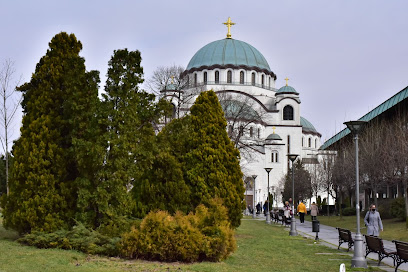
Karađorđe Monument
Explore the Karađorđe Monument in Belgrade, a remarkable symbol of Serbian history, surrounded by beautiful gardens and a serene atmosphere.
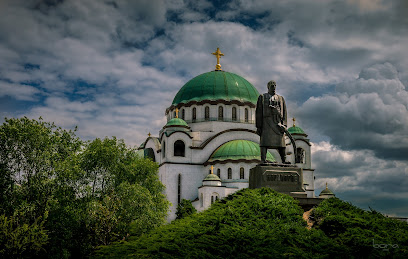
Monument to Saint Cyril and Methodius
Explore the Monument to Saint Cyril and Methodius in Belgrade, a stunning tribute to the legacy of literacy and culture in the Slavic world.
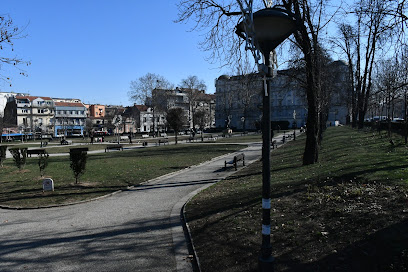
I Love Belgrade
Experience the vibrant heart of Belgrade at Trg Slavija, where history, culture, and modern life converge in a lively urban square.
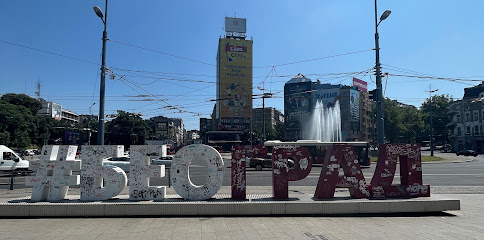
Dom Vračarske Štedionice
Explore Belgrade's architectural gem, Dom Vračarske Štedionice – a historical landmark reflecting the city's rich heritage and cultural significance.
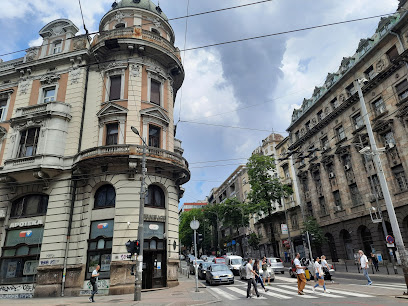
Kuća Popovića
Experience the rich history and charm of Kuća Popovića, a captivating historical landmark in the heart of Belgrade's Vračar district.
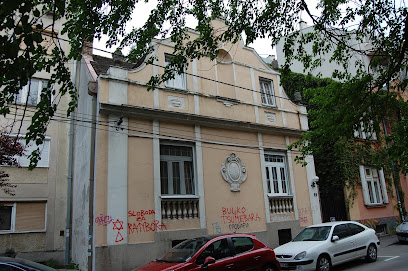
Čubura rupčaga
Explore Čubura Ružica, a charming tourist attraction in Belgrade's Vračar district, offering beautiful architecture and a taste of local culture.

Mural Srpski Naučnici
Explore Mural Srpski Naučnici in Belgrade, a vibrant homage to Serbia's intellectual giants and a key cultural landmark in the city.
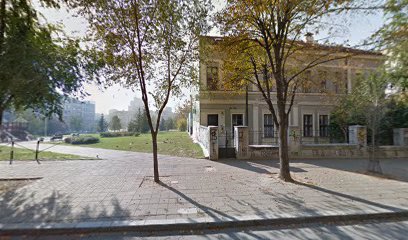
Njegošev Mural
Discover the vibrant Njegošev Mural in Belgrade, a historical landmark celebrating Serbia's cultural heritage and artistic expression.
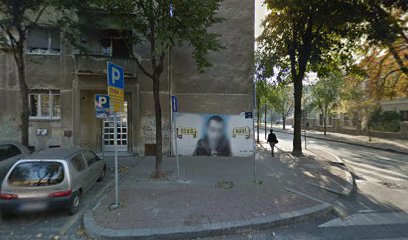
Unmissable attractions to see
Belgrade Fortress
Explore the historic Belgrade Fortress, a majestic castle offering stunning views and a rich narrative of Serbia's past.
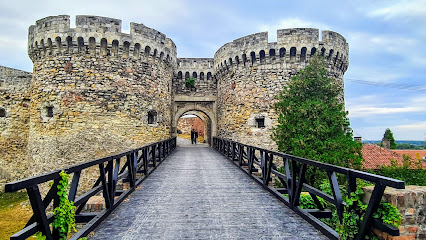
Military Museum
Discover the Military Museum in Belgrade, a captivating journey through Serbia's military history with extensive exhibits and outdoor displays.
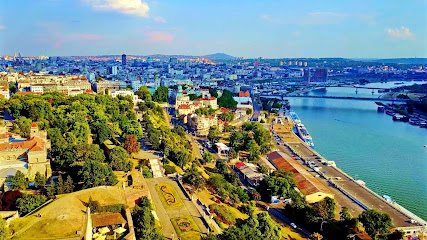
Historical Museum of Serbia
Explore Serbia's past at the Historical Museum, where history resonates through captivating exhibits and timeless artifacts.
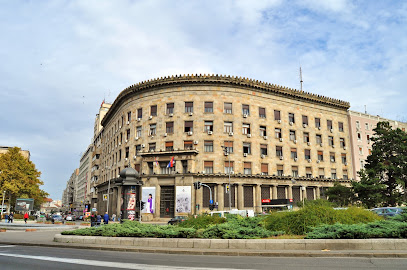
The Old Palace
Explore The Old Palace in Belgrade, a historical landmark that embodies the city's royal heritage and architectural splendor.
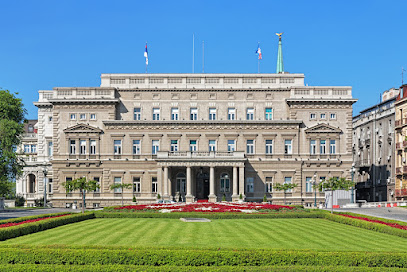
Karađorđe Monument
Explore the Karađorđe Monument in Belgrade, a stunning tribute to Serbian history, surrounded by beautiful greenery and rich cultural significance.
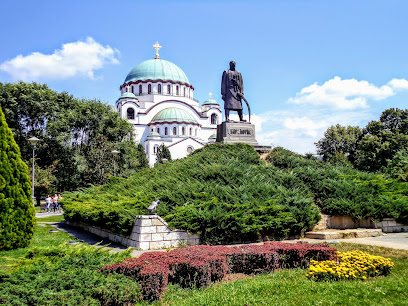
I Love Belgrade
Experience the vibrant atmosphere of Belgrade at I Love Belgrade, a cultural hub that captures the essence of the city's rich heritage and lively spirit.

Spomen ploča Jeleni Šantić
Explore the serene Spomen ploča Jeleni Šantić in Belgrade, a tribute to the beloved Serbian poet amidst lush greenery and rich cultural heritage.
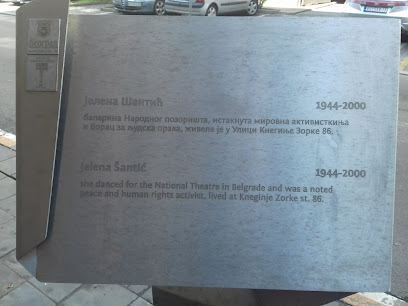
Hrast lužnjak na cvetnom trgu
Explore the serene beauty of Hrast lužnjak na Cvetnom Trgu, Belgrade's iconic oak tree, a perfect blend of nature and history in the city.
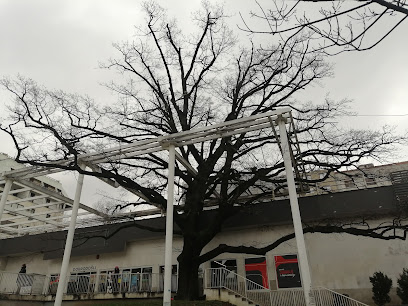
Essential places to dine
Voulez-Vous
Discover Voulez-Vous: A charming restaurant in Belgrade offering delicious local cuisine and exquisite coffee in an inviting atmosphere.
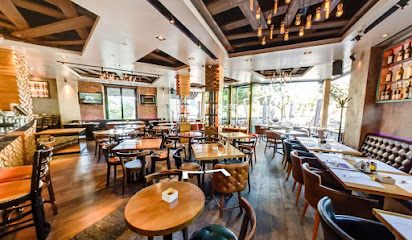
Terminal Gastro Bar
Experience the best of Serbian cuisine at Terminal Gastro Bar - where modern gastronomy meets vibrant atmosphere in Belgrade.
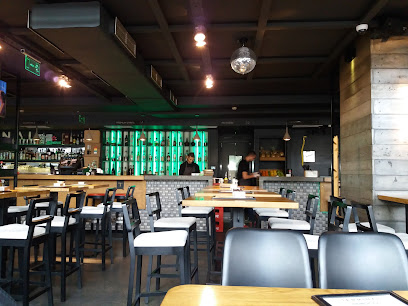
Restaurant Cross
Discover exquisite Serbian cuisine at Restaurant Cross in Belgrade's Vračar district—where tradition meets modern culinary artistry.
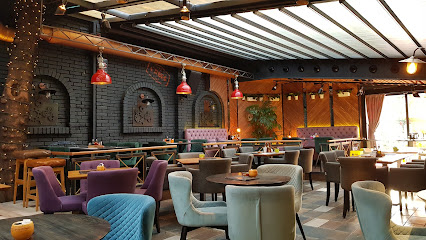
Amici
Experience authentic Italian flavors at Amici in Belgrade's Vračar district – where every bite feels like a trip to Italy.
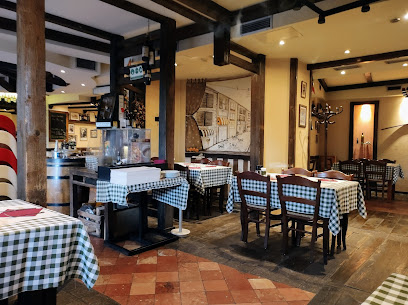
Le Petit Bistro Vracar
Experience authentic European cuisine at Le Petit Bistro Vracar in Belgrade, where every dish tells a story of tradition and flavor.
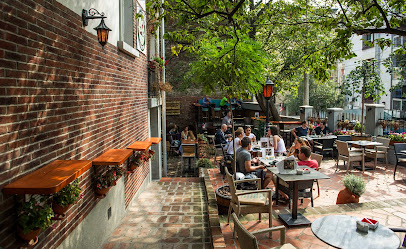
Marenda
Experience authentic Serbian flavors at Marenda in Belgrade – your go-to destination for delightful brunches and lunches.
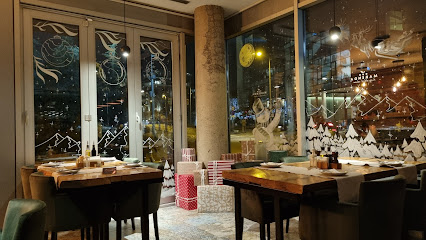
Ba.ba.lu
Discover authentic Serbian cuisine with a modern twist at Ba.ba.lu, the culinary highlight of Belgrade's Vračar district.
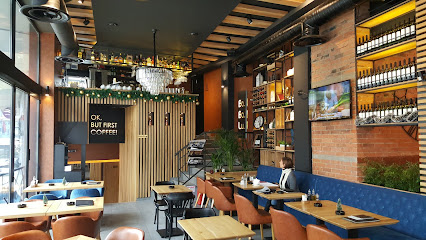
Bistro du Vin
Experience authentic French cuisine at Bistro du Vin in Belgrade's vibrant Vračar district, where quality meets tradition.
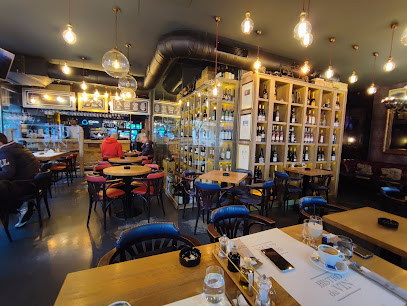
Steak & Pizza Restoran Dimitrije
Experience authentic Serbian flavors at Steak & Pizza Restoran Dimitrije, where delicious steaks meet mouthwatering pizzas in Belgrade's vibrant Vračar district.
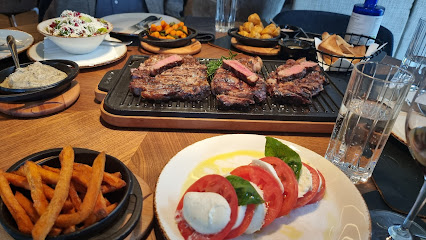
Za Druga Restaurant
Discover the taste of Serbia at Za Druga Restaurant in Belgrade - where tradition meets modernity in every dish.

Restoran Butler
Experience authentic Serbian flavors in the heart of Belgrade at Restoran Butler - where tradition meets contemporary dining.
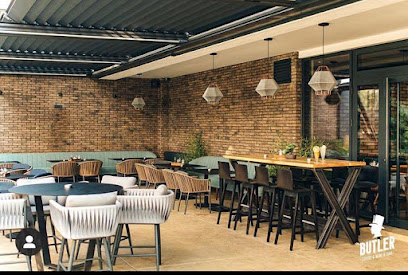
Gilda Restaurant
Experience culinary excellence at Gilda Restaurant in Belgrade—where tradition meets innovation for an unforgettable dining journey.

Markets, malls and hidden boutiques
UŠĆE Shopping Center
Explore UŠĆE Shopping Center in Belgrade - your ultimate shopping haven with diverse stores, delicious dining, and exciting entertainment options.
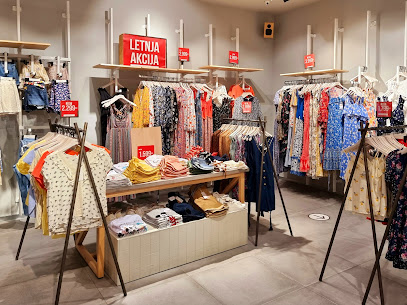
BIG FASHION Beograd
Experience the best of shopping and dining at BIG FASHION Beograd, where every visit offers a unique blend of style, comfort, and entertainment.
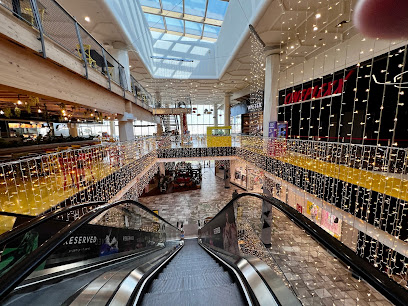
Rajićeva Shopping Center
Explore Rajićeva Shopping Center in Belgrade, where modern retail meets local culture in a vibrant shopping experience.
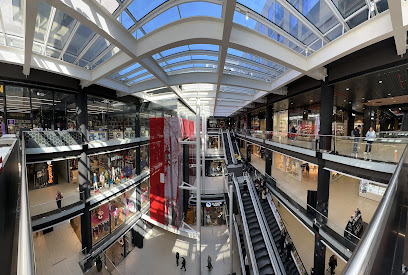
Textile house
Discover unique vintage fashion at Textile House in Belgrade's Vračar district, where every piece has a story to tell.

Vintage Beograd
Explore Vintage Beograd: A unique vintage store in Belgrade offering a delightful collection of antiques and collectibles that capture the city's rich history.
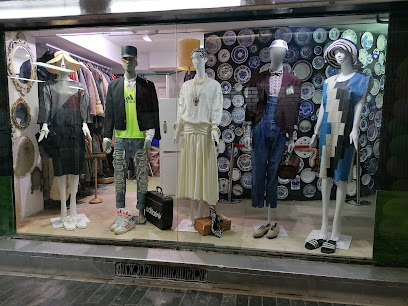
Jane Doe Vintage Shop
Explore the charm of Belgrade at Jane Doe Vintage Shop, where vintage clothing meets artistic creativity in an inviting atmosphere.
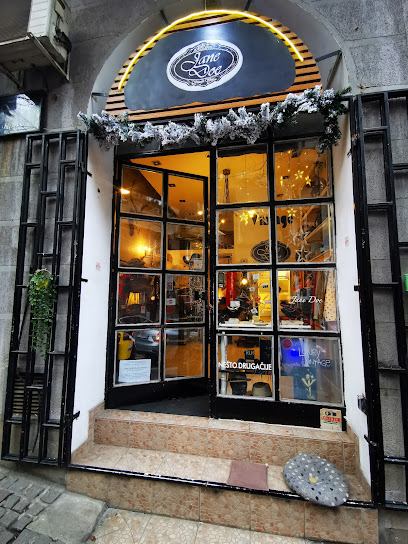
Šmizla Vintage & Design Store
Discover timeless fashion treasures at Šmizla Vintage & Design Store, a unique shopping destination in the heart of Belgrade offering eclectic vintage finds.
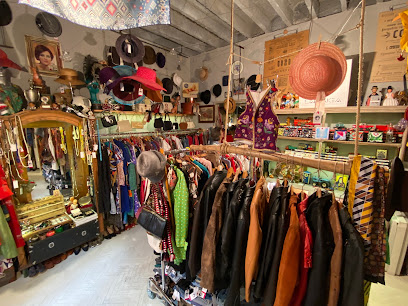
LUD POKLON
Discover unique Serbian gifts and handcrafted treasures at Lud Poklon, a charming gift shop in Belgrade's Vračar neighborhood.
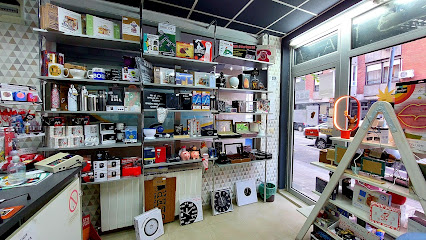
Hibi BG Shop
Explore Hibi BG Shop in Belgrade for authentic Serbian souvenirs and handmade crafts that capture the essence of local culture.
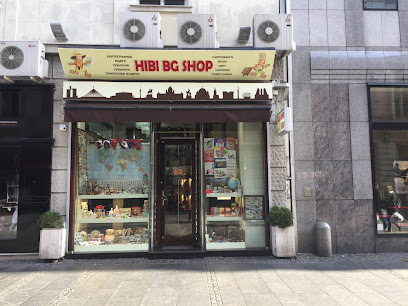
Teddy Bear Gift Shop
Discover the enchanting Teddy Bear Gift Shop in Belgrade, where delightful plush toys and unique gifts await every visitor's heart.
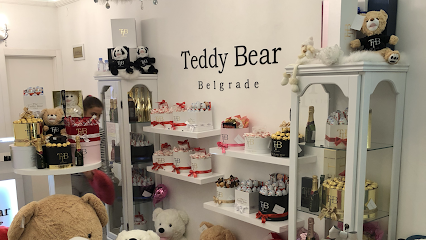
Essential bars & hidden hideouts
Monk's Bar
Discover the lively atmosphere of Monk's Bar in Belgrade, where great drinks and friendly service await you in the heart of Vračar.
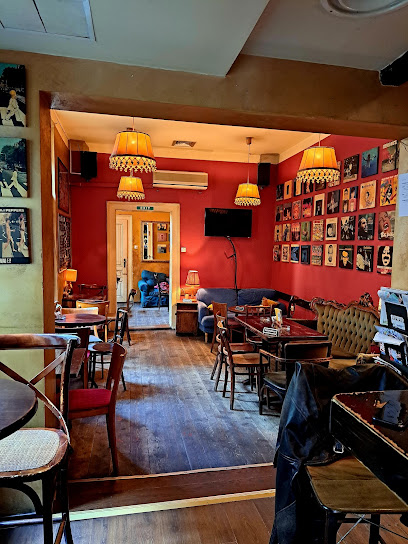
Pejton Pub
Discover Pejton Pub in Belgrade: a brewpub where craft beer meets delightful cuisine in a cozy atmosphere.
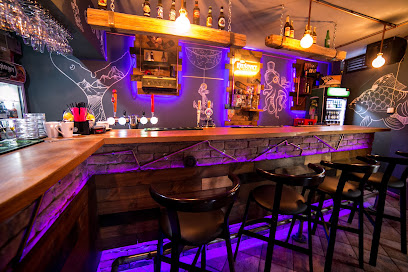
Kultura Bar
Experience the vibrant spirit of Belgrade at Kultura Bar, where expertly crafted cocktails and a lively atmosphere await you.

Vronski
Explore Vronski, a vibrant bar in Belgrade's Vračar neighborhood, offering an exquisite selection of wines and a lively atmosphere.

Tri Kralja Beer Bar
Discover the essence of Belgrade’s nightlife at Tri Kralja Beer Bar, where local brews and lively atmosphere create unforgettable moments.
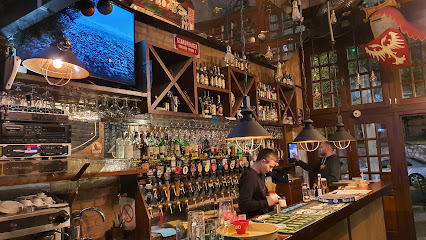
Black Petar Pub
Discover the lively nightlife of Belgrade at Black Petar Pub, known for its great drinks and welcoming atmosphere.
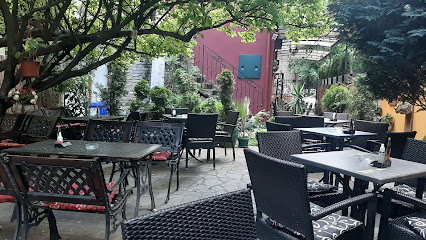
Crown's Street Pub
Discover the lively Crown's Street Pub in Belgrade, where great drinks and a vibrant atmosphere create unforgettable experiences.
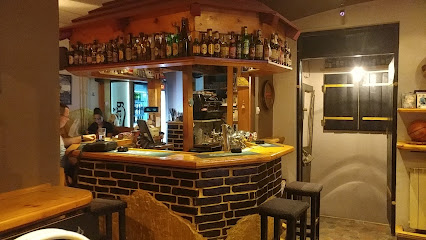
Pampour Bar
Discover the essence of Belgrade nightlife at Pampour Bar, where modern drinks meet a cozy atmosphere in the heart of Vračar.
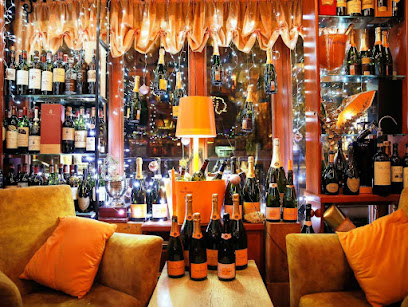
Whiskey bar Beograd
Indulge in Belgrade's finest whiskey selection at Whiskey Bar, a cozy retreat in the heart of the city, perfect for connoisseurs and casual sippers alike.

Vida Wine&Tapas bar
Discover the perfect blend of fine wines and delectable tapas in the heart of Belgrade at Vida Wine & Tapas Bar.
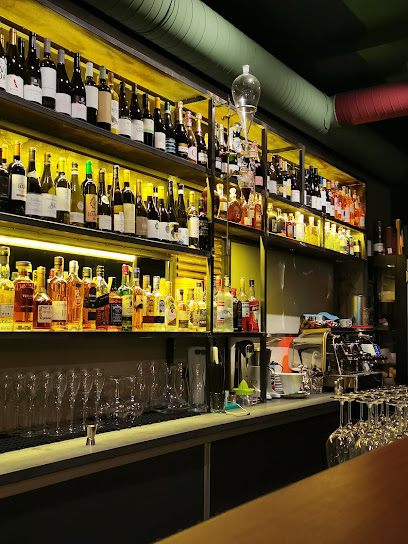
Local Phrases
-
- HelloZdravo
[Zdrah-voh] - GoodbyeDoviđenja
[Doh-vee-jeh-nya] - YesDa
[Dah] - NoNe
[Neh] - Please/You're welcomeMolim vas
[Moh-leem vahs] - Thank youHvala
[Hvah-lah] - Excuse me/SorryIzvinite
[Eez-vee-nee-teh] - How are you?Kako si?
[Kah-koh see?] - Fine. And you?Dobro. A ti?
[Doh-bro. Ah tee?] - Do you speak English?Da li govorite engleski?
[Dah lee goh-voh-ree-teh ehn-gleh-skee?] - I don't understandNe razumem
[Neh rah-zoo-mehm]
- HelloZdravo
-
- I'd like to see the menu, pleaseMolim vas, želeo bih da vidim meni
[Moh-leem vahs, zheh-leh-oh bee dah vee-deem meh-nee] - I don't eat meatNe jedem meso
[Neh yeh-dehm meh-so] - Cheers!Živeli!
[Zhee-veh-lee] - I would like to pay, pleaseMolim vas, želeo bih da platim
[Moh-leem vahs, zheh-leh-oh bee dah plah-teem]
- I'd like to see the menu, pleaseMolim vas, želeo bih da vidim meni
-
- Help!Pomoć!
[Poh-moh-ch] - Go away!Idi odavde!
[Ee-dee oh-dahv-deh] - Call the Police!Pozovite policiju!
[Poh-zoh-vee-teh poh-lee-tsee-yoo] - Call a doctor!Pozovite doktora!
[Poh-zoh-vee-teh dohk-toh-rah] - I'm lostIzgubio/la sam se
[Eez-goo-byoh/lah sahm seh] - I'm illBolestan/sna sam
[Boh-leh-stahn/snah sahm]
- Help!Pomoć!
-
- I'd like to buy...Želeo bih da kupim...
[Zheh-leh-oh bee dah koo-peem] - I'm just lookingSamo gledam
[Sah-moh gleh-dahm] - How much is it?Koliko košta?
[Koh-lee-koh kohs-tah?] - That's too expensiveTo je previše skupo
[Toh yeh preh-vee-she skoo-poh] - Can you lower the price?Možete li spustiti cenu?
[Moh-zheh-teh lee spoos-tee-tee tseh-noo?]
- I'd like to buy...Želeo bih da kupim...
-
- What time is it?Koliko je sati?
[Koh-lee-koh yeh sah-tee?] - It's one o'clockJedan sat je
[Yeh-dahn saht yeh] - Half past (10)Pola (deset)
[Poh-lah (deh-set)] - MorningJutro
[Yoo-troh] - AfternoonPopodne
[Poh-pohd-neh] - EveningVeče
[Veh-cheh] - YesterdayJuče
[Yoo-cheh] - TodayDanas
[Dah-nahs] - TomorrowSutra
[Soo-trah] - 1Jedan
[Yeh-dahn] - 2Dva
[Dvah] - 3Tri
[Tree] - 4Četiri
[Cheh-tee-ree] - 5Pet
[Peh-t] - 6Šest
[Shehst] - 7Sedam
[Seh-dahm] - 8Osam
[Oh-sahm] - 9Devet
[Deh-veht] - 10Deset
[Deh-set]
- What time is it?Koliko je sati?
-
- Where's a/the...?Gde je...?
[Gdeh yeh...?] - What's the address?Koja je adresa?
[Koh-yah yeh ah-deh-sah?] - Can you show me (on the map)?Možete li mi pokazati (na mapi)?
[Moh-zheh-teh lee mee poh-kah-zah-tee (nah mah-pee)?] - When's the next (bus)?Kada je sledeći (autobus)?
[Kah-dah yeh sleh-deh-chee (ow-toh-boos)?] - A ticket (to ....)Jednu kartu (do ...)
[Yeh-dnoo kahr-too (doh ...)]
- Where's a/the...?Gde je...?
History of Vracar
-
Vračar's history dates back to the Roman period when it was known as a significant settlement called Singidunum. The area gradually developed over the centuries, becoming an important part of Belgrade's urban landscape. Its name is derived from the Serbian word for 'to wander or roam,' reflecting its historical role as a gathering place.
-
In the 19th century, Vračar became the center of Serbian culture and spirituality. The construction of the iconic St. Sava Temple, which began in 1935, marked a pivotal moment in the neighborhood's history. This temple is one of the largest Orthodox churches in the world and serves as a symbol of Serbian identity and faith.
-
The Balkan Wars (1912-1913) saw significant military activity around Belgrade, including Vračar. The neighborhood was impacted by the conflicts, with many buildings and homes being repurposed for military needs. This period marked a time of both struggle and resilience for its residents.
-
The interwar period brought substantial development to Vračar, with the establishment of new residential buildings and public institutions. The neighborhood became known for its modernist architecture, which reflected the broader trends of the time. Vračar emerged as a desirable place to live, housing many artists and intellectuals.
-
During World War II, Vračar, like much of Belgrade, experienced occupation and destruction. Post-war, the area was subject to reconstruction efforts that reshaped its architectural landscape. The period also saw a revitalization of cultural life, with the establishment of various museums and galleries that highlighted the neighborhood's artistic heritage.
-
Today, Vračar is recognized as one of Belgrade's most vibrant neighborhoods, blending historical significance with modern amenities. It is home to numerous cafes, restaurants, and cultural institutions, making it a focal point for both locals and tourists. The ongoing preservation of its historical sites, alongside new developments, reflects the neighborhood's dynamic character.
Vracar Essentials
-
Vračar is well-connected to the rest of Belgrade. You can reach Vračar from the city center using tram lines 2, 3, and 5, which run frequently and are an efficient way to navigate the city. Alternatively, buses 32, 38, and 41 also service Vračar. For those arriving from Nikola Tesla Airport, taxis are available, or you can take an airport shuttle to the city center, followed by public transport to Vračar.
-
Vračar is a compact neighborhood, making it perfect for walking. However, for longer distances, Belgrade's public transport is reliable. Use trams and buses, which have frequent schedules. For a more local experience, consider renting a bicycle, as there are bike paths in the area. Taxis and ride-sharing services are also an option for convenience.
-
Vračar is generally a safe neighborhood for tourists, but it is wise to remain vigilant, especially at night. Avoid poorly lit areas and be cautious of your belongings in crowded places. Areas around the railway stations may have higher instances of petty crime, so exercise caution there.
-
In case of an emergency, dial 192 for police, 194 for the fire department, and 193 for medical assistance. Most locals speak some English, and you can ask for help if needed. Keep a copy of your passport and travel insurance information handy. There are also hospitals and clinics available in Vračar for medical needs.
-
Fashion: Do dress modestly, especially when visiting religious sites like the Temple of Saint Sava. Don't wear overly casual clothing such as beachwear. Religion: Do respect local customs and traditions, covering your shoulders and knees in churches. Public Transport: Do offer your seat to the elderly or disabled. Don't engage in loud conversations or eat on public transport. Greetings: Do greet with a smile and a handshake. Don't use overly casual greetings with strangers. Eating & Drinking: Do try local specialties and accept invitations. Don't waste food or refuse hospitality, as it may offend your hosts.
-
To experience Vračar like a local, visit the local bakeries for fresh burek and the nearby farmers’ markets for local produce. Engage with local cafés that often host cultural events or live music. Attend a service at the Temple of Saint Sava to appreciate its architecture and atmosphere. For a unique experience, check out the Skadarlija district, a historical bohemian street, for traditional Serbian cuisine and live music.
Nearby Cities to Vracar
-
Things To Do in Pančevo
-
Things To Do in Smederevo
-
Things To Do in Novi Sad
-
Things To Do in Kragujevac
-
Things To Do in Kraljevo
-
Things To Do in Tuzla
-
Things To Do in Subotica
-
Things To Do in Szeged
-
Things To Do in Arad
-
Things To Do in Drobeta-Turnu Severin
-
Things To Do in Sarajevo
-
Things To Do in Niš
-
Things To Do in Zenica
-
Things To Do in Mitrovica
-
Things To Do in Podujevo








